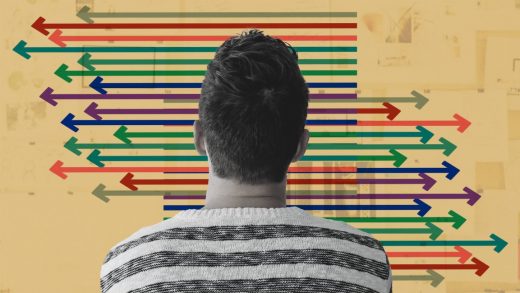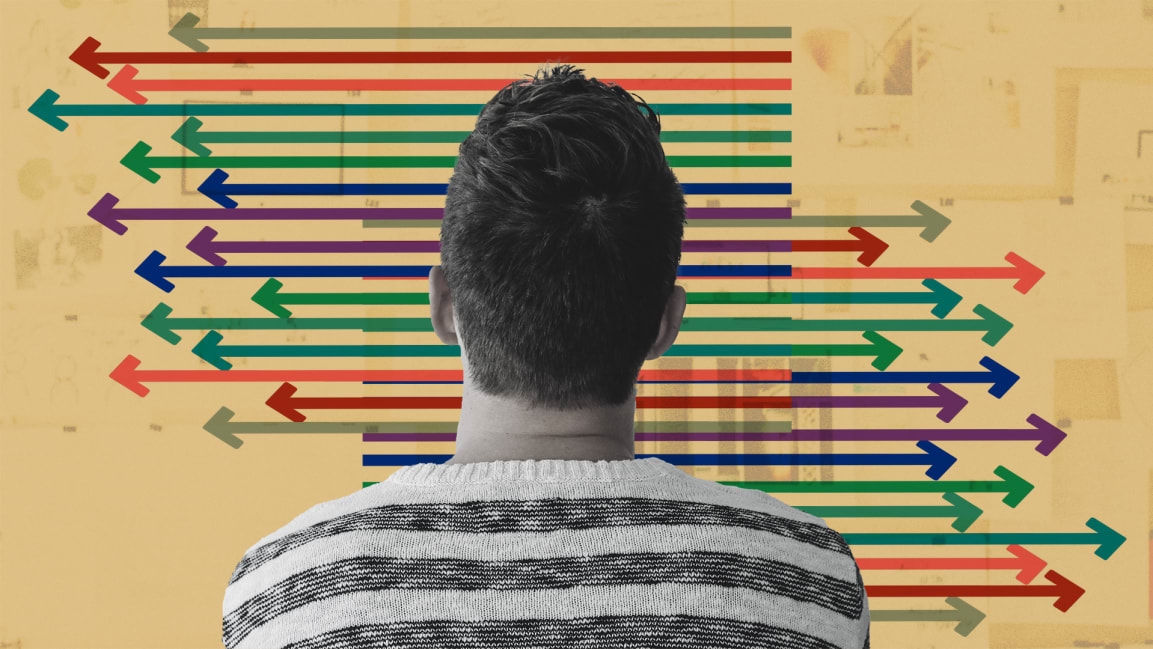3 simple ways to become less anxious and more decisive
For those of us who struggle with decision gridlock, here are three simple tools for becoming more confident and decisive.
The Happiness Test
We’re eating together in a restaurant and you’re agonizing over what to order. You finally figure out what you want, you put in your order, and the waiter brings you your food. Maybe your food is great. Maybe it’s just okay. Maybe it’s not very good. Maybe it’s even so bad you push your plate away in disgust.
If you’re like most people, the food you ate at that one meal didn’t affect your happiness much, if at all, a year later. If you’re like most people, that’s also true if I asked you after a month, or even a week. Regardless of whether your food is good or bad, it is unlikely to have any significant effect on your happiness in the long run. The same is also true if you watch the beginning of a bad movie on Netflix or wear pants that turn out to be uncomfortable.
What this tells you is that choosing what to eat, watch, or wear are types of decisions that are low impact.
The Happiness Test is one way to figure out if you’re deciding about something that’s low impact.
Broadly defined, happiness is a good proxy for understanding the impact of a decision on achieving your long-term goals. When you find out that the potential gains or losses (as measured in happiness) are small, that means the decision is low impact and you can go fast.
There are whole categories of decisions where, whatever option you choose (the chicken or the fish, the gray suit or the blue one, Austin Powers or The Princess Bride), the outcome won’t have much of an effect on your happiness in the long run (or the short run, for that matter).
If the category of thing you’re deciding about passes the Happiness Test, that tells you that you can speed up because there isn’t much of a penalty for getting it less “right.”
The time you gain is time you can spend on a more impactful decision or time you can spend making a low-risk experimental choice to poke at the world.
The Only-Option Test
Barry Schwartz points out in his book, The Paradox of Choice, that the greater the number of available options to choose from, the greater the likelihood that more than one of those options will look pretty good to you. The more options that look pretty good to you, the more time you spend in analysis paralysis.
That’s the paradox: more good choices, more anxiety.
If you’re deciding where to go on an amazing vacation and the choices are between Paris and touring a factory that cans fish, no one has a problem choosing. But if the choices are Paris or Rome or Amsterdam or Santorini or Machu Picchu? You get the picture. Decision gridlock ensues.
A useful tool you can use to break the gridlock is the Only-Option Test.
The Only-Option Test clears away the debris cluttering your decision. If you’d be happy if Paris were your only option, and you’d be happy if Rome were your only option, that reveals that if you just flip a coin, you’ll be happy whichever way the coin lands.
Quit-to-itiveness
When you choose something from a menu and you don’t like how it tastes, you immediately become aware that there’s always a cost to making a choice. That cost is measured by the good things that might have come if you had picked a different option. You could have ordered a different dish, which might have been great, and maybe if you had taken more time deciding, you wouldn’t have gotten your order “wrong.” That’s also true when you don’t like the movie you picked, or the job you took, or the house you bought.
The cost of picking an option is part of what slows you down. Quitting is an effective way to reduce that cost, helping you break through the gridlock.
I’m sure you’ve heard the old saying, “Quitters never win, and winners never quit.” It seems to be accepted wisdom that stick-to-itiveness creates success. Stick-to-itiveness does have value, but so does quit-to-itiveness.
Part of a good decision process includes asking yourself, “If I pick this option, what’s the cost of quitting?” The lower the cost to quit, the faster you can decide because that means it’s easier to back and choose options you previously passed on, or brand new options you hadn’t considered before.
You can take less time deciding who to ask on a first date than deciding who to marry. You can take less time deciding which house to rent than deciding which one to buy. You can take less time deciding whether to move to a different neighborhood than deciding whether to move to another country.
Because of the way the human mind works, we tend to view decisions as permanent and final, particularly if they are high impact. We don’t think much in advance about the option to quit. But once you look at decisions through the frame of quit-to-itiveness, you’ll find that for many decisions you thought (or simply assumed) you couldn’t unwind, the cost isn’t prohibitively high.
When people are choosing colleges, for example, they agonize partly because they think they’re making a decision that’s permanent for the next four years of their life. But 37% of college students transfer to a new school and nearly half of those transfer multiple times.
Once you realize that transferring is an option, you can shift your frame from not even considering the option to quit to asking what it would cost to do so. Will your credits transfer? What’s the cost of leaving your friends? How hard will it be to make new ones? What is the cost to move? Will you be able to get into a better college?
No matter what your answers are, I’d bet the cost of quitting is lower than you thought because you likely weren’t even thinking about it before.
Be quit-to-itive to speed up your decisions.
We all suffer to some degree from analysis paralysis when things are normal. Add in the uncertainty of a global pandemic, and you’re probably experiencing a lot more decision gridlock. By using the Happiness Test, the Only-Option Test, and Quit-to-itiveness, you can better figure out which decisions deserve all that extra time and which ones you can speed up. Less decision paralysis means less anxiety and we could all use a little less of that these days.
Annie Duke is a corporate speaker, and consultant in the decision-making space, and author of the bestselling book Thinking in Bets: Making Smarter Decisions When You Don’t Have All the Facts. Duke is a former professional poker player and the cofounder of The Alliance for Decision Education.
This article has been adapted and excerpted from her latest book Thinking in Bets.
(27)



